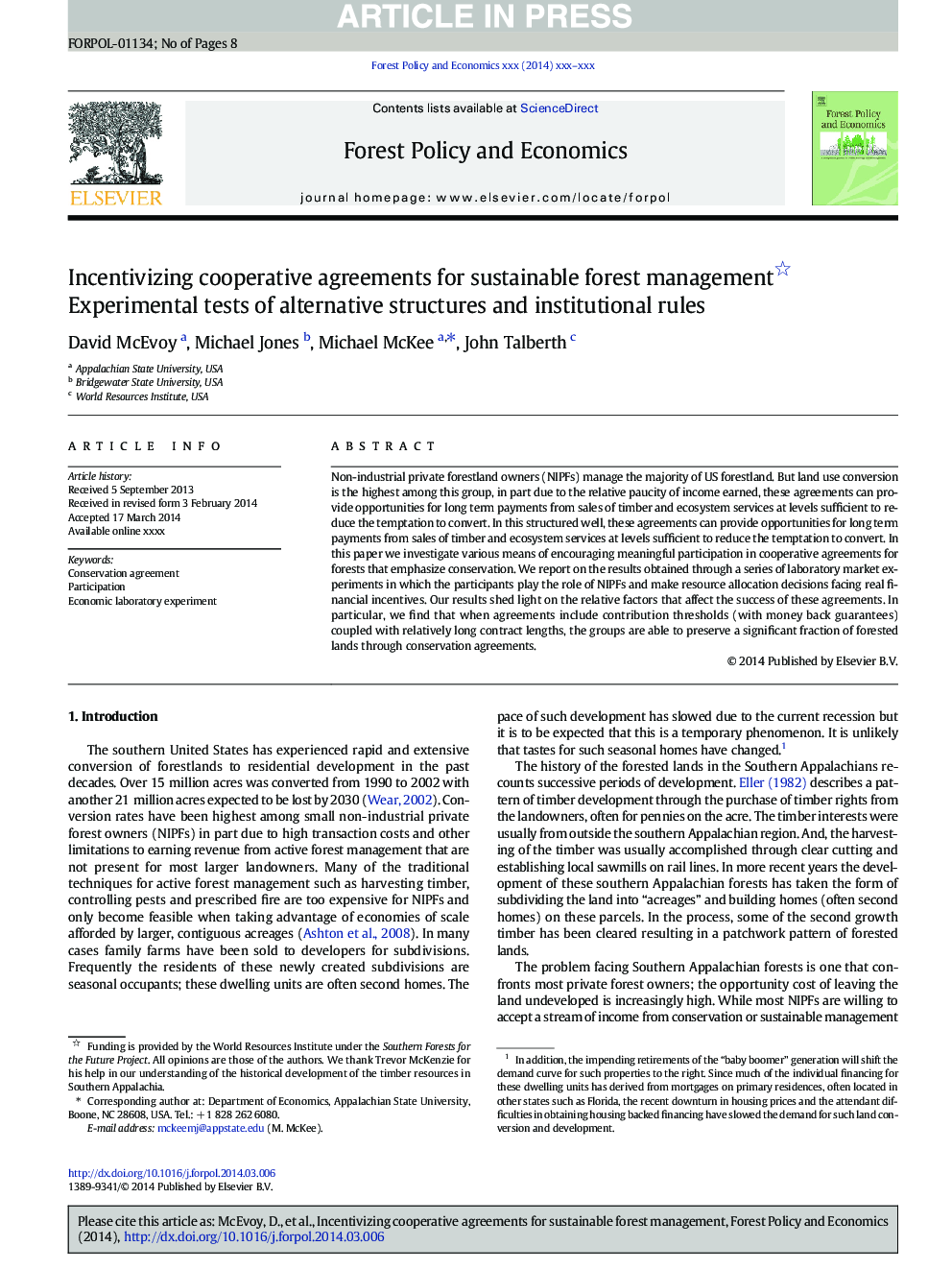| Article ID | Journal | Published Year | Pages | File Type |
|---|---|---|---|---|
| 6544982 | Forest Policy and Economics | 2014 | 8 Pages |
Abstract
Non-industrial private forestland owners (NIPFs) manage the majority of US forestland. But land use conversion is the highest among this group, in part due to the relative paucity of income earned, these agreements can provide opportunities for long term payments from sales of timber and ecosystem services at levels sufficient to reduce the temptation to convert. In this structured well, these agreements can provide opportunities for long term payments from sales of timber and ecosystem services at levels sufficient to reduce the temptation to convert. In this paper we investigate various means of encouraging meaningful participation in cooperative agreements for forests that emphasize conservation. We report on the results obtained through a series of laboratory market experiments in which the participants play the role of NIPFs and make resource allocation decisions facing real financial incentives. Our results shed light on the relative factors that affect the success of these agreements. In particular, we find that when agreements include contribution thresholds (with money back guarantees) coupled with relatively long contract lengths, the groups are able to preserve a significant fraction of forested lands through conservation agreements.
Keywords
Related Topics
Life Sciences
Agricultural and Biological Sciences
Forestry
Authors
David McEvoy, Michael Jones, Michael McKee, John Talberth,
